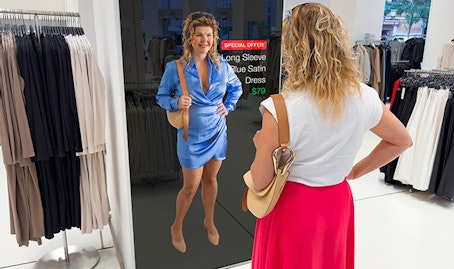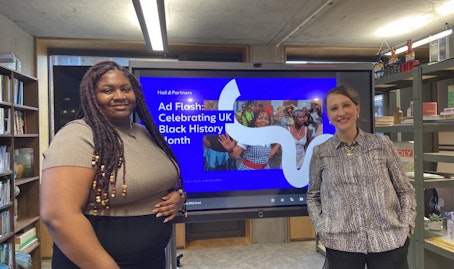Perspectives
Second screens, silent fans: Rethinking engagement in the attention economy

Kurt Stuhllemmer
Hall & Partners

Are second screens a sign of obsession or distraction… and what if your most loyal fans are the ones not saying anything at all?
I’m writing this now from the perspective of a so-called "second screen", though to be honest, it’s more like my third, fourth, or even fifth. My phone is lighting up with email alerts, my iPad has Teams open in the background, and my desktop is staring back at me with that familiar blinking cursor on a blank page. Even the TV is on, quietly spilling today’s headlines into the room.
Second screening is real. In fact, in my case, it’s the second, third, and fourth screening all at once. Media consumption today is messy, layered, and noisy. The television, once the centrepiece, often sits quietly behind a wall of other digital distractions.
And it got me thinking, what does this look like when we’re not working? Is it really about which screen we’re using, or should we be talking about where our attention is going?
Later this evening, I’ll probably be scrolling Amazon for a new collar for the dog on my iPad, thumbing through social media on my phone, and somewhere in the background, the latest episode of Suspicion will be playing on TV. (Side note, it’s well worth a watch.)
For years now, second screening has been seen as the holy grail of entertainment engagement. It’s been treated as a gold standard for capturing real-time buzz, especially among Gen Z. Brands scramble to be part of the moment, launching hashtags, triggering meme waves, and pushing live Q&As with stars, all hoping to catch fans mid-scroll with something worth reacting to.
But maybe it’s time to take a step back and question that logic.
Are second screens really a sign of deep emotional connection to content? Or are we simply mistaking noise for loyalty, and activity for attention? Personally, I think it's time we move beyond the buzzwords and start having a more honest conversation, not just about second screens, but about the real challenge facing entertainment brands today: attention attraction.
Rethinking fandom and engagement
1. Second screen engagement: A symptom, not a signal
The prevailing assumption is that dual-screening equals dual-engagement that if someone is watching a show and tweeting about it, they must be emotionally invested. But research and behaviour suggest something more complicated.
Sometimes, second screening is a way to share the moment. But other times, it’s a way to escape it.
When a scene doesn’t grip us, when the plot lags or the emotional stakes fall flat, our reflex is to scroll. We answer messages, check Instagram, swipe through TikTok, or open another tab. We might even tweet about the show, but often that content is sarcastic, meta, or even critical.
“If the show was truly immersive, would we even be tweeting right now?”
Instead of treating second screen activity as proof of success, entertainment brands might want to consider it a canary in the coal mine: a potential red flag that the content itself isn’t doing enough of the emotional heavy lifting.
2. Silent fandoms: The hidden side of fan engagement
On the flip side, brands are missing a crucial insight: many of the most loyal fans don’t second screen at all, at least not in a way that’s publicly visible.
They’re what we might call silent fandoms: viewers who watch closely, think deeply, and care intensely… but don’t feel the need to post about it. They’re the savers, not the sharers. The readers, not the repliers.
According to digital community research, as much as 90% of fandom audiences are “lurkers”. They consume content, follow threads, screenshot memes, and read theories but never post or engage in real time.
They may not be the ones dominating trending topics or leading the conversation online, but these viewers are just as valuable. They rewatch episodes because they’re genuinely invested. They talk about your content with friends, not just on social media, but in real-life conversations that build word-of-mouth momentum. They share memes in private group chats, save behind-the-scenes content, and follow the story long after the credits roll. These are the fans who buy the merchandise, turn up at screenings, and stay loyal from one season to the next. Their engagement might not always be loud or visible, but it’s consistent, long-lasting, and often the most meaningful.
These fans might not show up in your analytics dashboard, but they’re the reason your show becomes a long-term cultural fixture, not just a fleeting moment.
3. Entertainment brand strategy: Beyond second screen marketing
If we stop equating second screening with success, a different kind of strategy emerges. One that values depth over noise and lasting cultural impact over momentary spikes.
Entertainment brands should start by rethinking the focus on real-time engagement. Rather than trying to capture attention while a show is on air, the goal should be to create scenes and storylines that are emotionally powerful and visually memorable. When content truly connects, audiences will stay present and engaged from beginning to end.
It is equally important to create content that appeals to quieter fans. These viewers may not post publicly, but they are still highly engaged. Content that invites curiosity, such as behind-the-scenes details, location insights, character backgrounds, or hidden story elements, can be just as impactful when it is easy to save or share in private conversations.
Success should not be measured only by public interaction. Brands should look at data points like completion rates, rewatch numbers, save activity on platforms like Instagram or TikTok, and how much time viewers spend with in-depth or fan-created content. Mentions within private group chats or direct messages, often referred to as dark social, can also provide valuable insight into how deeply audiences are connecting.
Finally, some of the strongest fan engagement happens after the episode ends. Many viewers go online to explore fan theories, watch recap videos, and share creative responses like memes and playlists. These post-viewing habits reveal a deeper level of emotional investment. Rather than focusing only on live reactions, brands should consider how they can support and sustain fan conversations long after the credits roll.
4. Fan engagement strategies: Why the loudest fans aren’t always loyal
In the rush to activate the second screen, we may be underestimating the first one. And in chasing the fans who shout, we might be ignoring the ones who stay.
True fandom isn't always loud, and attention isn’t always visible. Sometimes, the most powerful connection happens in silence, off the feed, off the record, and far from the noise.
Want help identifying your silent superfans or measuring dark social impact? H&P specialises in mapping unseen audience behaviour and the importance to brand building. Get in touch.
Talk to our team of experts
Learn how we can deliver actionable insights and creativity to drive brand growth.







